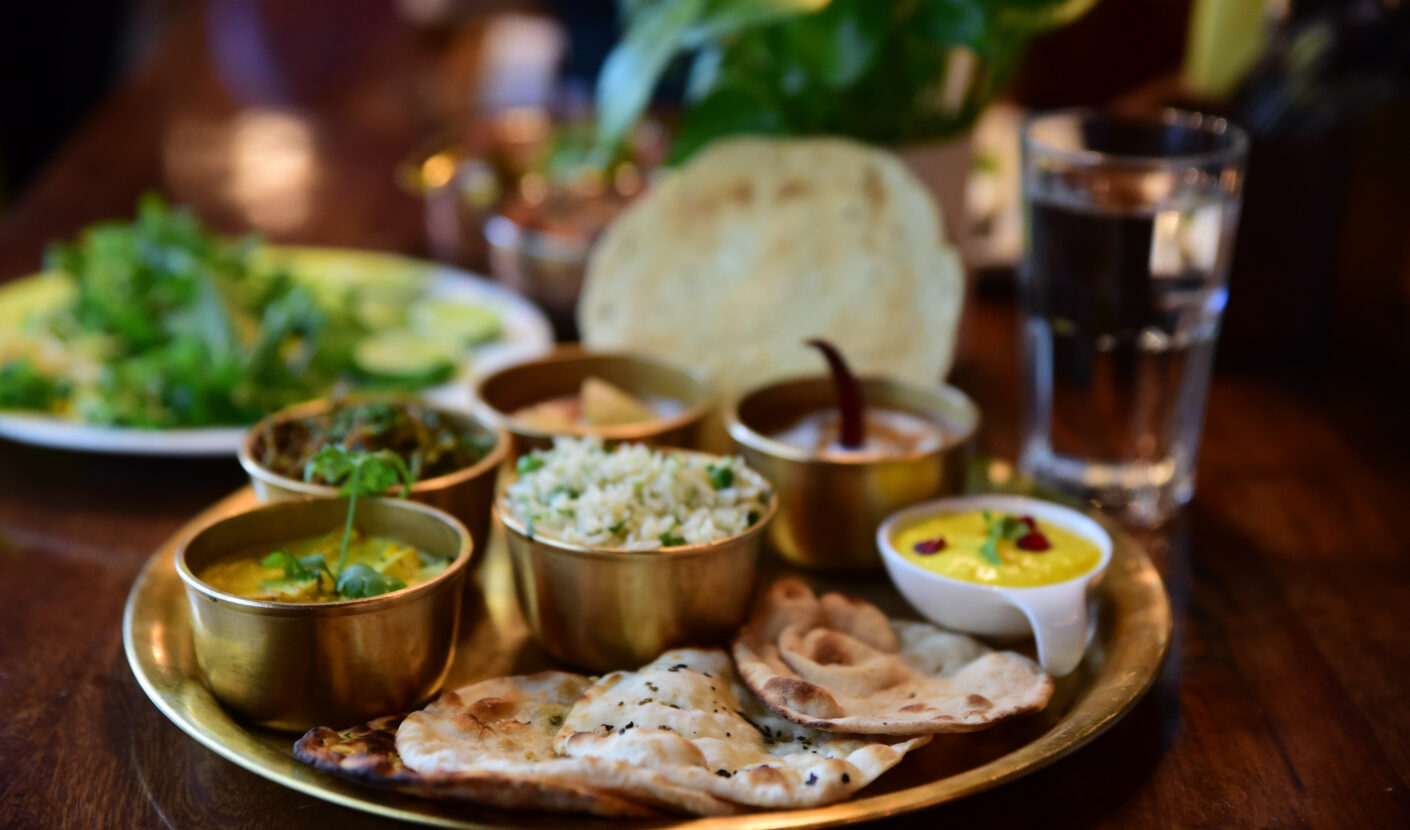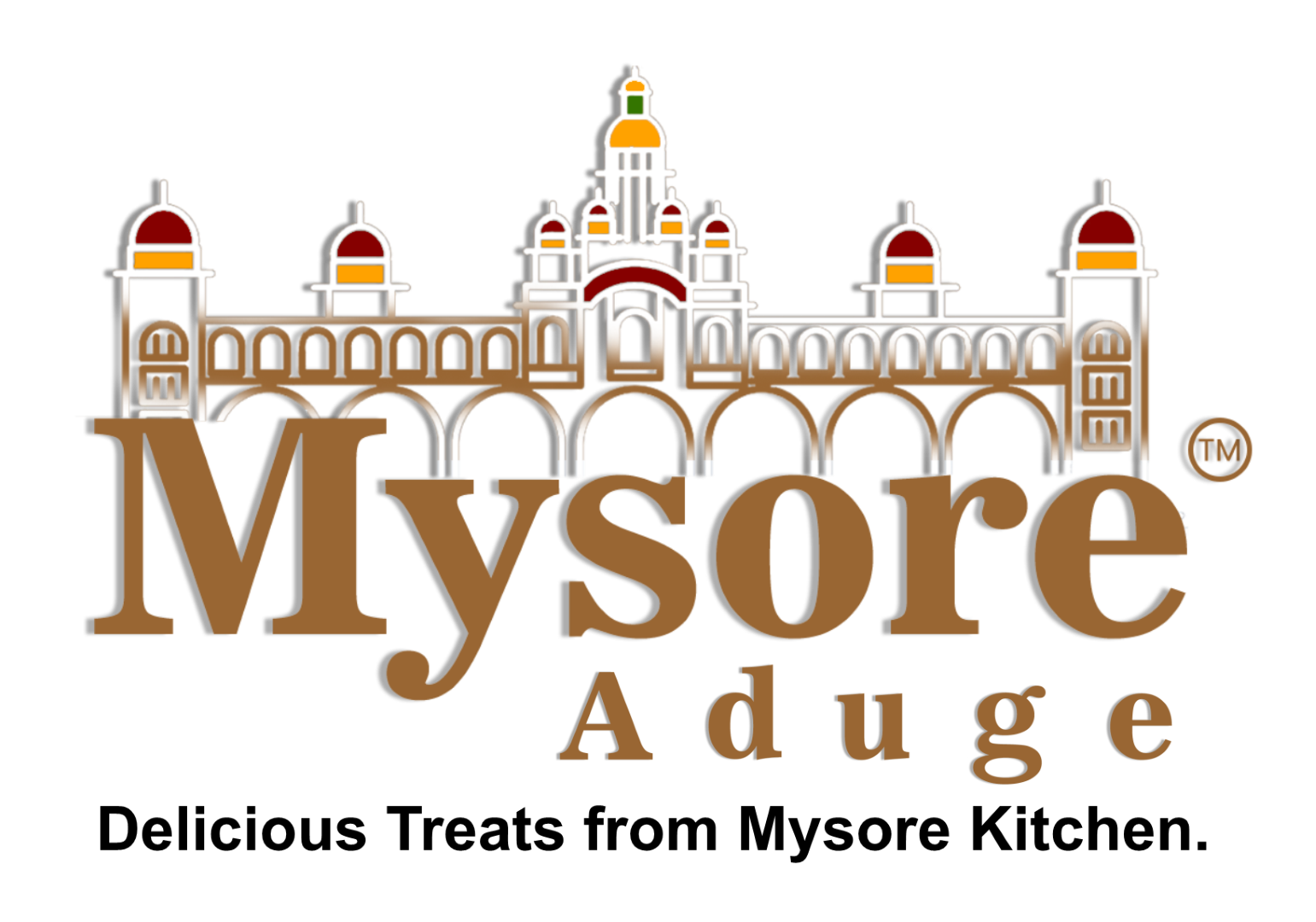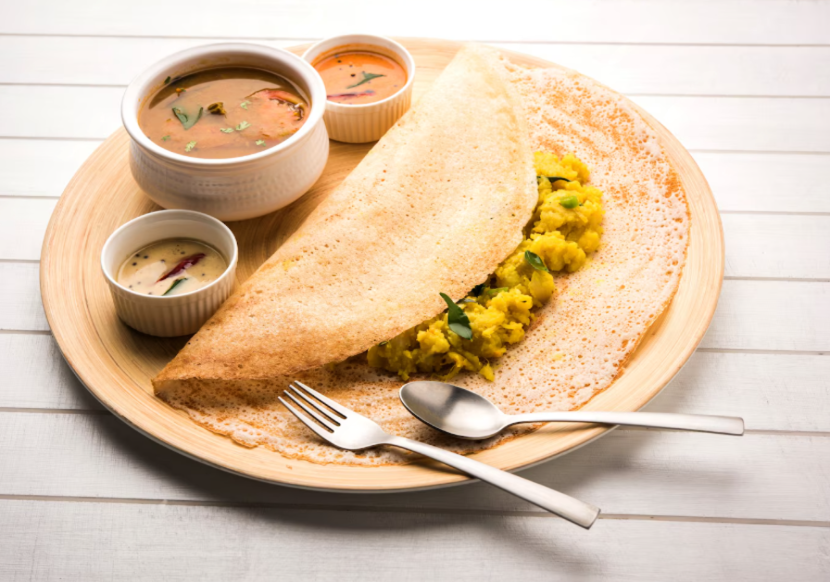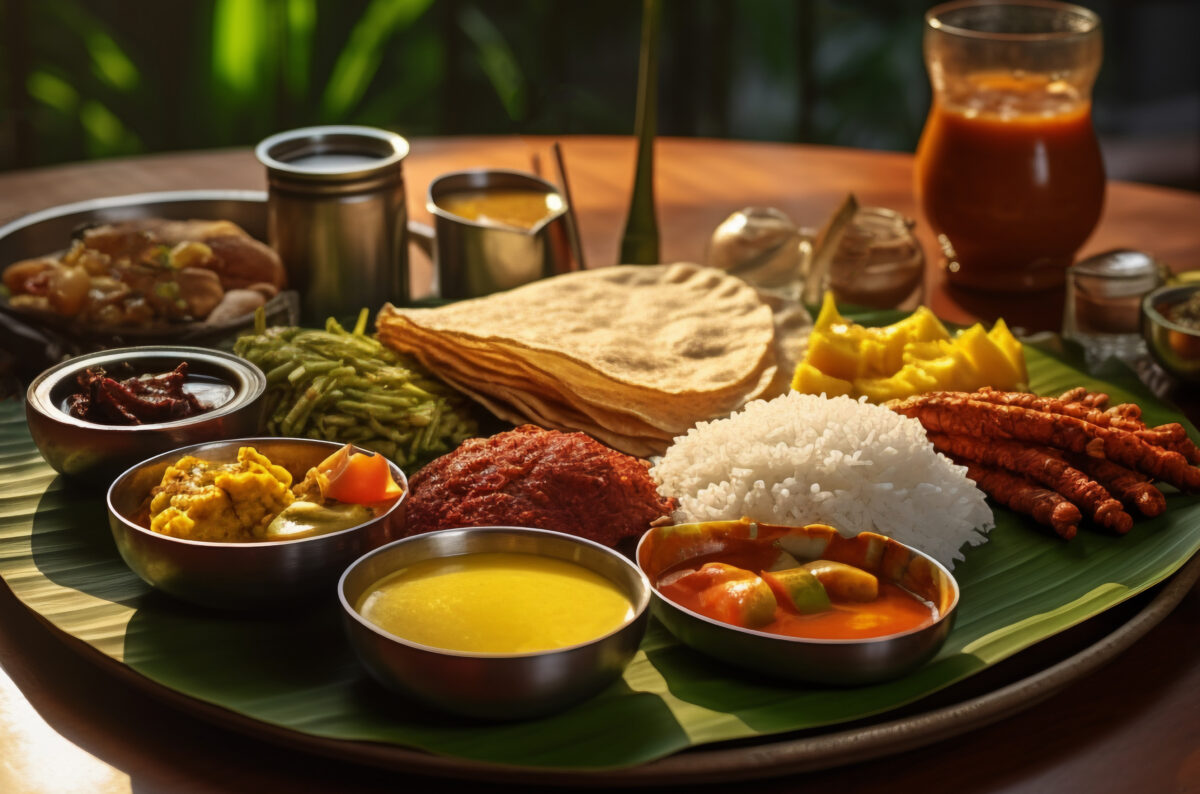
- April 8, 2025
What is South Indian Food? A Complete Guide to Its Rich Culinary Heritage
What is South Indian food? It is a vibrant and diverse culinary tradition originating from the five southern states of India—Tamil Nadu, Kerala, Karnataka, Andhra Pradesh, and Telangana. South Indian cuisine is known for its bold flavors, extensive use of rice and lentils, coconut-based curries, and a unique combination of spices that create a perfect balance of taste and nutrition.
Rooted in regional Indian food traditions, South Indian traditional food has been influenced by centuries of temple cuisine, Ayurveda, and local agriculture. From the light and crispy Dosa to the aromatic and spicy Hyderabadi Biryani, every dish reflects the rich food culture of the region. The cuisine features a variety of cooking methods, including fermentation, steaming, slow cooking, and tempering, making it one of the most versatile and health-friendly cuisines in the world.
In this guide, we will explore South Indian cuisine basics, its regional differences, must-try dishes, and why it is loved worldwide.
South Indian Cuisine Basics
South Indian cuisine is distinct for its use of locally available ingredients, unique cooking techniques, and a focus on light, nutritious meals. Unlike North Indian cuisine, which often includes ghee-based curries, bread like naan, and creamy gravies, South Indian food emphasizes plant-based ingredients, rice-based meals, and coconut-infused dishes.
One of the defining features of South Indian food is its reliance on fermentation. Many dishes, such as Dosa, Idli, and Uttapam, undergo a natural fermentation process, making them rich in probiotics that aid digestion. The combination of tamarind, chilies, mustard seeds, and curry leaves gives South Indian dishes their signature taste—spicy, tangy, and aromatic.
Key Ingredients in South Indian Food
South Indian food features a range of ingredients that contribute to its authentic flavors and textures:
- Rice – The staple ingredient in most South Indian dishes, used in preparations like Idli, Dosa, Curd Rice, and Hyderabadi Biryani.
- Lentils (Dal) – Commonly used in Sambar, Rasam, and Vada, providing essential protein and fiber.
- Coconut – Adds creaminess and richness to curries, chutneys, and sweets like Payasam.
- Tamarind – A key ingredient that brings tanginess to dishes like Sambar, Rasam, and Puliogare.
- Curry Leaves – Used in tempering for dishes like Upma, Chutneys, and South Indian curries.
- Mustard Seeds – Often added in the tadka (tempering) process to enhance aroma.
- Chilies – Green and red chilies provide the signature heat and spice levels found in many South Indian dishes.
- Jaggery – Used in Karnataka and Tamil Nadu cuisine to add a subtle sweetness to certain dishes.
Cooking Methods in South Indian Cuisine
South Indian cooking relies on a variety of methods to create light, flavorful, and aromatic dishes:
- Fermentation – The process of allowing batter to ferment before cooking is key to dishes like Idli, Dosa, and Uttapam, improving their texture and making them healthier.
- Steaming – Used in dishes like Idli, Puttu, and Kozhukattai, making them soft, fluffy, and easy to digest.
- Slow Cooking – Seen in traditional dishes like Hyderabadi Biryani and Payasam, where slow cooking allows flavors to blend beautifully.
- Tempering (Tadka) – A cooking technique where mustard seeds, curry leaves, dried chilies, and lentils are fried in oil to enhance flavor. This is done in dishes like Sambar, Rasam, and Upma.
- Deep Frying – Used in crispy snacks like Medu Vada, Banana Chips, and Mysore Bonda.
Regional Food Culture of South India
South India is home to diverse culinary traditions, each shaped by local ingredients, climate, and cultural influences. The food culture in each state has developed unique flavors and cooking techniques.
Tamil Nadu Cuisine
- Tamil Nadu cuisine is known for its spicy, tangy, and bold flavors, with a strong influence from temple food and the Chettinad region.
- The cuisine features a lot of tamarind, black pepper, and red chilies, making dishes rich in spice.
- Rice is a staple, and meals are often served on banana leaves, which is believed to enhance flavor.
- Popular dishes: Chettinad Chicken, Sambar, Rasam, Pongal, Medu Vada, Filter Coffee.
Kerala Cuisine
- Kerala’s cuisine is heavily coconut-based, with dishes featuring coconut milk, fresh coconut, and coconut oil.
- Seafood is prominent, as Kerala has a long coastline. Spices like cardamom, cinnamon, and cloves are used in abundance.
- The famous Sadya meal is a vegetarian feast with multiple small dishes served on a banana leaf.
- Popular dishes: Kerala Prawn Curry, Appam & Stew, Malabar Biryani, Avial, Banana Chips.
Karnataka Cuisine
- Karnataka cuisine offers a mix of spicy, sweet, and mild flavors. It is known for Udupi cuisine, which is purely vegetarian.
- The use of jaggery in many dishes gives a slight sweetness to otherwise savory items.
- Popular dishes: Bisi Bele Bath, Mysore Masala Dosa, Ragi Mudde, Neer Dosa, Maddur Vada.
Andhra Pradesh & Telangana Cuisine
- Andhra Pradesh cuisine is one of the spiciest in India, using Guntur chilies to enhance heat.
- Telangana cuisine features strong, peppery flavors and dishes cooked in tamarind-based gravies.
- Popular dishes: Hyderabadi Biryani, Gongura Pickle, Pesarattu, Andhra Chicken Curry.
Must-Try South Indian Dishes
If you’re wondering what is South Indian food, here are some must-try dishes that define the cuisine:
- Dosa & Idli – Fermented rice and lentil pancakes & steamed rice cakes.
- Vada – Deep-fried lentil fritters, crispy outside, soft inside.
- Sambar & Rasam – Spicy lentil soups with tamarind, spices, and vegetables.
- Hyderabadi Biryani – A fragrant slow-cooked rice dish with marinated meat or vegetables.
- Payasam – A traditional rice pudding made with milk, sugar, and dry fruits.
- Puliogare – Tamarind rice, a tangy and spicy dish from Karnataka.
- Neer Dosa – A delicate rice crepe from Karnataka, served with coconut chutney.
- Kerala Prawn Curry – A coconut milk-based seafood dish.
- Upma – A simple, yet flavorful semolina dish eaten for breakfast.
Each of these dishes showcases the unique textures, flavors, and cooking styles of South Indian cuisine, making them a must-try for anyone exploring regional Indian food.
Why South Indian Food is Loved Worldwide
South Indian food is not just delicious but also incredibly healthy and diverse. Some reasons why it has gained global popularity include:
- Nutrient-Rich – South Indian food incorporates fermented foods, fresh vegetables, and plant-based proteins.
- Vegan & Vegetarian-Friendly – Many South Indian dishes are naturally plant-based, making them accessible to a wide audience.
- Balanced Flavors – A combination of sweet, sour, spicy, and umami elements makes the food appealing to all taste preferences.
- Ancient Culinary Traditions – Rooted in temple cuisine and Ayurveda, ensuring a balance of taste and health benefits.
Experience Authentic South Indian Food at Mysore Aduge
For an authentic taste of South Indian food, visit Mysore Aduge. Specializing in traditional delicacies like Mysore Masala Dosa, Puliyogare, and Bisi Bele Bath, Mysore Aduge brings the flavors of Karnataka to your plate.
Explore real South Indian cuisine with Mysore Aduge and enjoy the rich food culture and heritage of the region. If you’re considering investing, explore our article on the most profitable food businesses in Mumbai.
Frequently Asked Question
South Indian food is known for its fermented dishes, coconut-based curries, and spicy flavors. The cuisine is primarily rice-based and features a variety of cooking techniques such as steaming, slow cooking, and tempering with aromatic spices.
Popular South Indian dishes include Dosa, Idli, Sambar, Rasam, Hyderabadi Biryani, Bisi Bele Bath, Pesarattu, Appam, and Payasam. These dishes represent the diverse flavors and textures of South Indian cuisine.
South Indian food is primarily rice-based, lighter, and often fermented, whereas North Indian food relies on wheat-based bread and is heavier, with more use of dairy like cream and butter. South Indian food also incorporates coconut and tamarind, while North Indian cuisine uses more tomatoes and onions.
Not all South Indian dishes are spicy. While Andhra Pradesh cuisine is known for its heat, Karnataka and Kerala cuisines offer milder, coconut-based dishes. Many South Indian dishes can be customized to suit different spice preferences.
Dishes like Idli, Rasam, and Vegetable Sambar are some of the healthiest options as they are light, packed with nutrients, and easy to digest.
Dosa and Idli are the most famous South Indian breakfast dishes, often served with coconut chutney and Sambar.
Yes! Simple dishes like Sambar, Coconut Chutney, Rasam, and Dosa can be made at home with minimal ingredients.
Many South Indian dishes, including Idli, Dosa, and Rice-based curries, are naturally gluten-free, making them an excellent choice for those with gluten intolerance.







